Does Drying Silk Ruin It? Best Practices for Silk Care
I absolutely love the look and feel of silk, but keeping my silk items in good condition can be tricky. Silk is a delicate fabric that requires special care, especially when it comes to washing and drying.
After accidentally ruining a few nice silk blouses by improperly drying them, I decided to do some research on the best practices for keeping silk looking its best.
In this article, I’ll share what I’ve learned about properly drying silk fabrics to avoid damage like shrinking, yellowing, and changes to texture.
I’ll also provide solutions if you’ve already dried a silk item incorrectly and need to restore it. My goal is to help you comfortably enjoy your silk pieces for many years to come through proper maintenance.
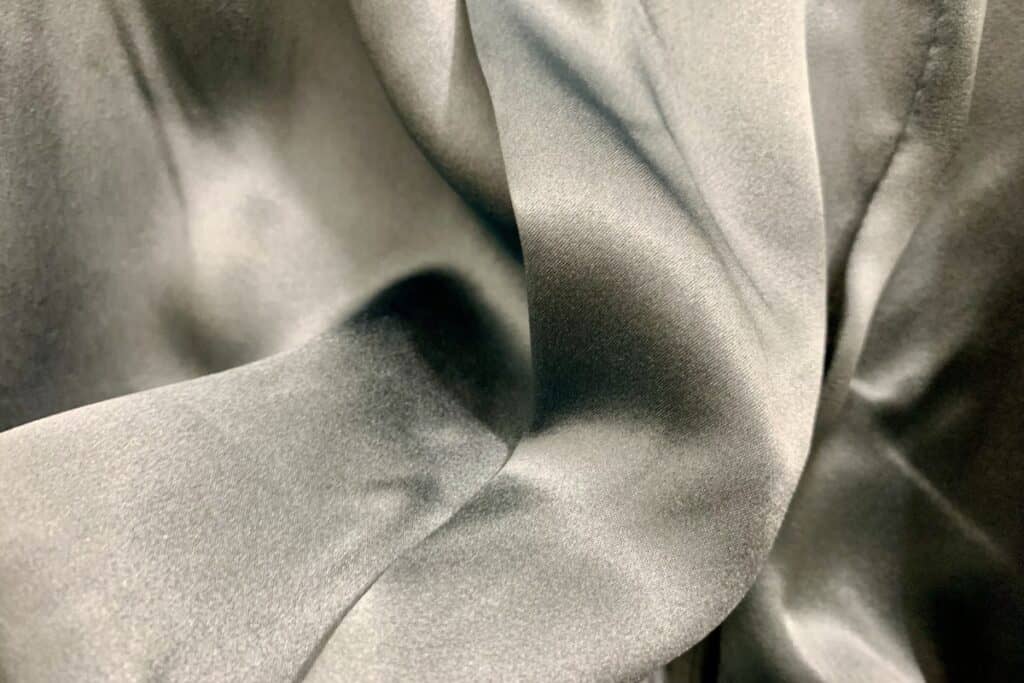
The Risks of Improperly Drying Silk
Drying silk garments using high heat or direct sunlight can really damage the fibers. I once made the mistake of putting a silk dress in the dryer, which caused extreme shrinkage.
I’ve also hung silk outside to dry in direct sunlight only to discover rough patches and fading.
What exactly happens when silk is dried incorrectly?
- Shrinkage – Silk fibers easily shrink when exposed to high heat during machine or outdoor drying.
- Yellowing & Discoloration – Sunlight acts as a bleach and can dull silk’s color. Moisture retention also encourages yellow staining over time.
- Loss of Sheen & Luster – Rough handling and moisture retention dulls silk’s signature shine.
- Stiffening, Crisp Texture – Heat damage causes silk fibers to become brittle.
- Weakened Fibers – Leads to future rips, holes, and overall fragility.
Pay attention to these warning signs of silk damage: extreme shrinking, yellowed or faded patches, loss of sheen, crisp hand feel, snags, runs, and tears.
I experimented with drying silk in the sun to see if it truly makes a difference.
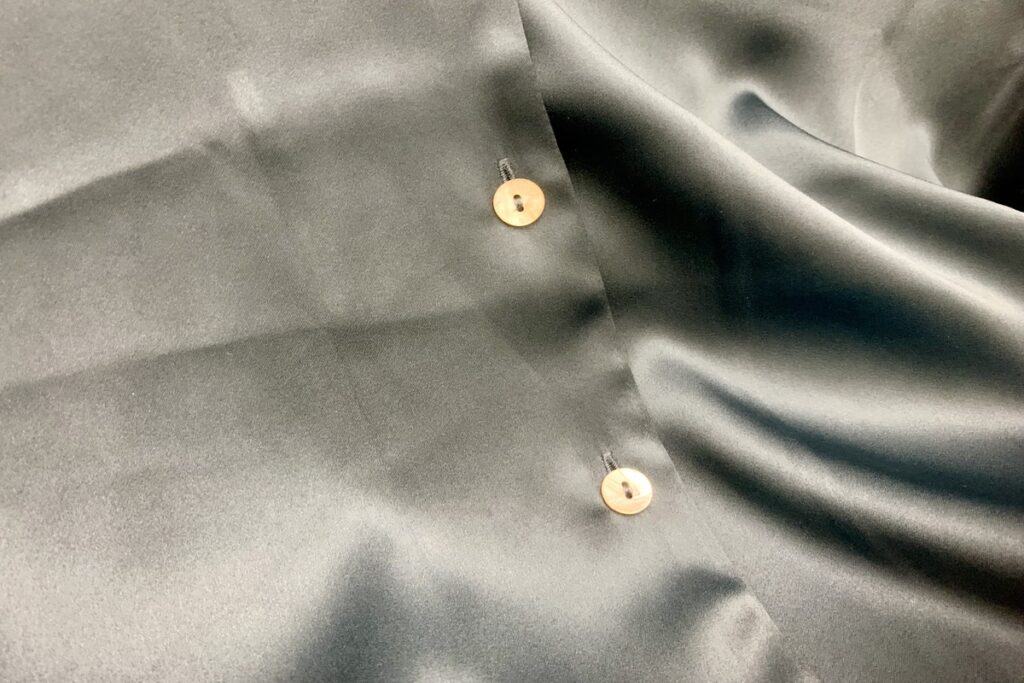
Can You Put Silk in the Dryer?
I often get asked, “Can you put silk in the dryer safely?” The short answer is no. I do not recommend machine drying silk fabrics unless the care tag specifically says dryer-safe.
The intense heat and friction inside a running dryer can too easily damage delicate silk fibers even on the lowest setting.
Risks of drying silk in the dryer include:
- Shrinkage from extreme heat
- Snags and holes from friction
- Loss of vibrancy in colors
- Overall fragility
Trust me, it’s just not worth the hassle and potential destruction of your favorite silk pieces. Skip the machine drying for your silk garments.
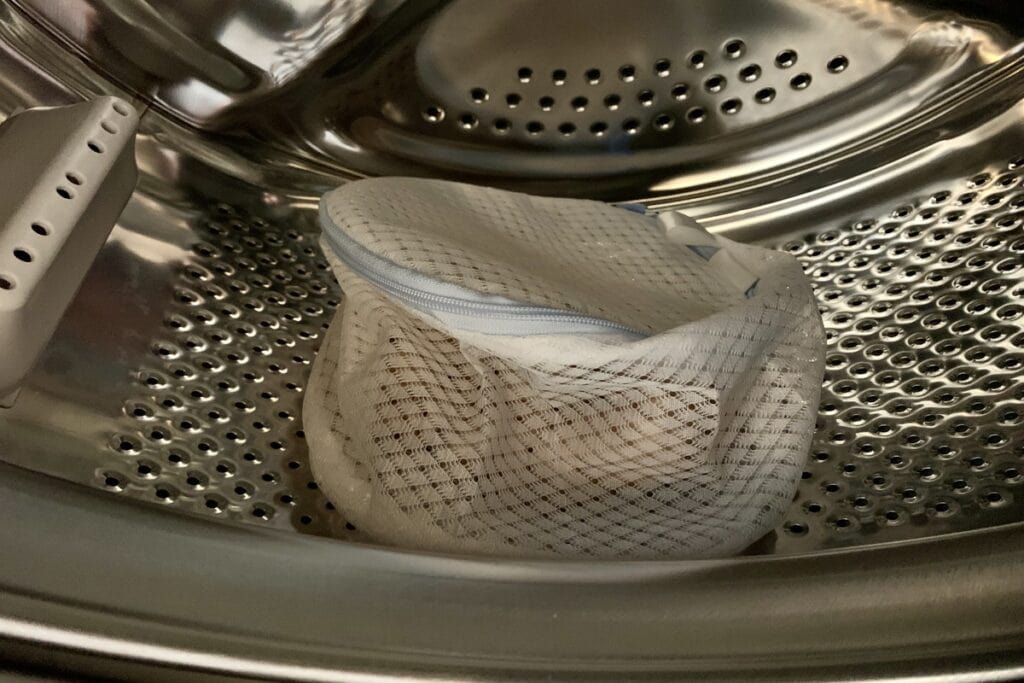
Proper Techniques for Drying Silk
So if you can’t dry silk in the machine or direct sunlight, what methods should you use? Here are the proper techniques I recommend for drying silk correctly at home:
Air Drying Flat
- Lay the silk garment flat on top of a clean, dry towel
- Reshape garment to original dimensions
- Allow to fully air dry out of sunlight
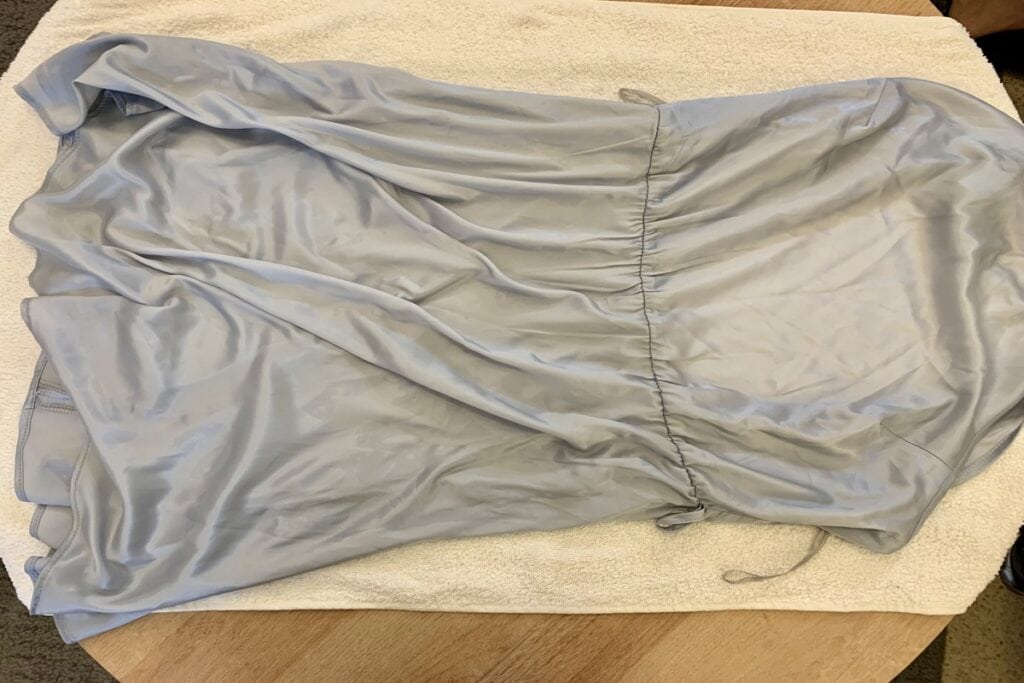
Drying Flat With Additional Towels
- Lay the silk garment flat on a dry towel
- Place additional dry towels on top to gently absorb moisture
- Flip the garment and rotate the towels until fully dry
Drying on a Drying Rack
- Lay the garment smoothly over a drying rack, using multiple clips if needed to prevent slipping
- Make sure the rack is in a shaded spot away from direct sunlight and heating vents
- Use an electric fan on low setting to speed moisture evaporation if needed
The keys are to avoid high heat, direct sunlight, and excess friction.
Drying silk slowly and smoothly preserves the integrity of the fibers. Make sure the silk air dries completely before wearing or storing to prevent mildew.
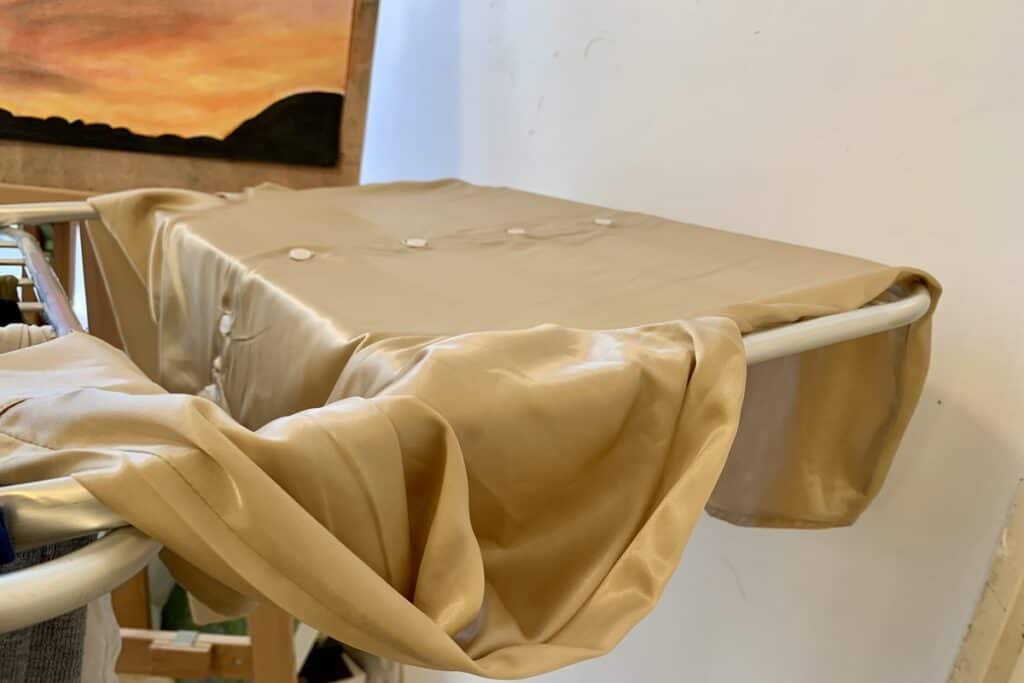
Examples of Good Silk Drying Surfaces
- Clean Cotton Towels – Gentle absorption, lay flat
- Drying Racks – Allows airflow, smooth surface
- Bathroom Towel Rods – Only if space allows the item to lay flat
Examples of Bad Silk Drying Surfaces
- Direct Sunlight – Causes fading and brittleness
- Outside on Fence – Promotes yellow staining
- Clotheslines – Can stretch and distort the shape
Fixing Silk That Has Been Incorrectly Dried
We all make mistakes, and I’ve accidentally damaged my fair share of silk pieces by drying them improperly.
Here are some tricks to restore silk if you’ve already exposed it to high heat, sunlight, or friction during drying:
- Vinegar Rinse – Mix 1 cup white vinegar per gallon of cool water. Soak the item for 1 hour, and rinse clean. Helps restore vibrancy.
- Steam Refresh – Hang the item in the bathroom while showering for targeted steam treatment. Use a garment steamer if available.
- Hydrogen Peroxide – Dilute HP with equal parts water in a spray bottle. Lightly mist affected areas. Rinse after 30 minutes. Removes stains from sun damage and underarm yellowing.
- Professional Dry Cleaning – Specifically ask for further silk conditioning and damage repair. Quality cleaners have access to special silk care products.
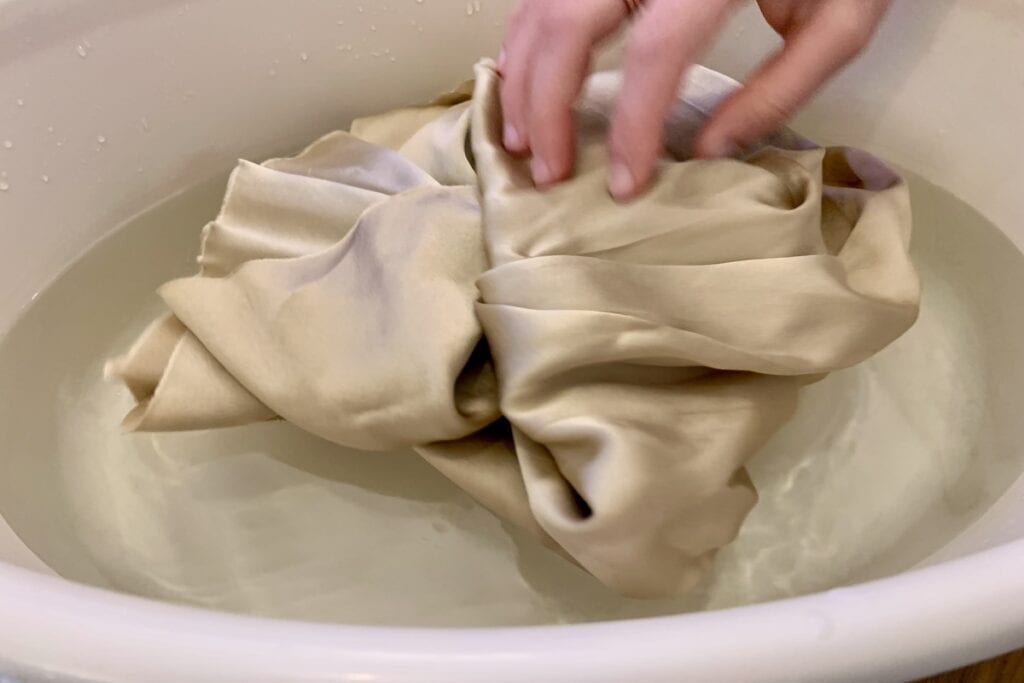
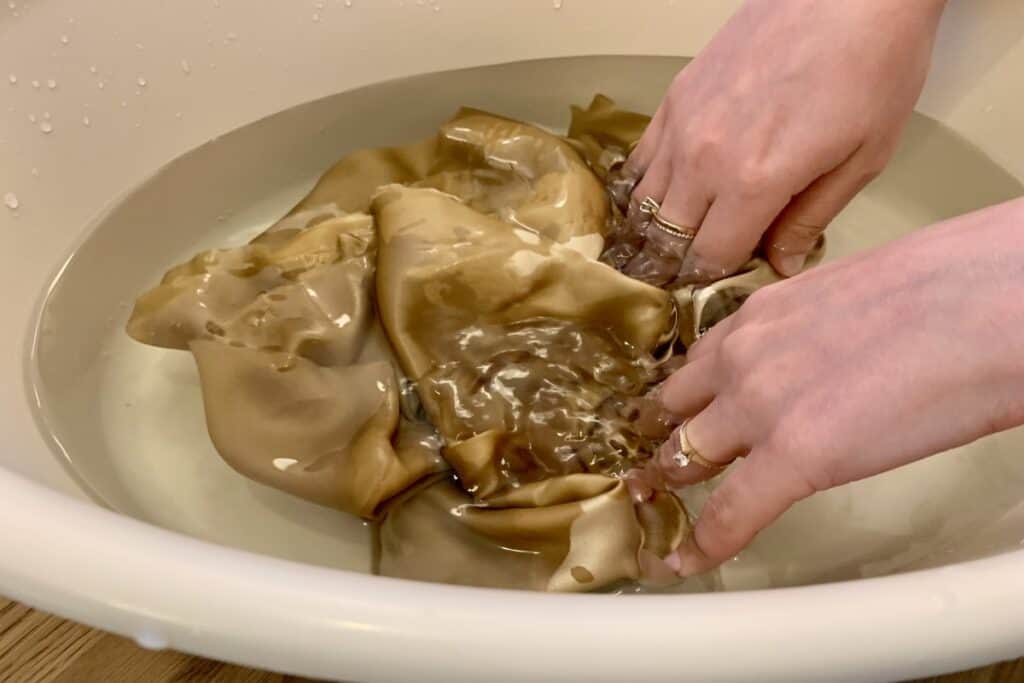
While you can reduce and hide some effects of heat and light damage, severely dried or discolored regions may be permanent.
But with a gentle approach, you can often restore silk close to its original state.
| Method | What it Fixes |
| Vinegar Rinse | Removes odors, brightens colors |
| Steam Treatment | Softens fibers, reduces wrinkles |
| Hydrogen Peroxide | Removes yellow stains |
| Professional Dry Cleaning | Further conditioning, damage repair |
My quest to restore the softness of dry silk led me to some invaluable silk care tips.
Preventing Silk Damage in the Future
An ounce of prevention is truly worth a pound of cure when it comes to keeping your favored silk pieces pristine. Here are pro tips for preventing damage during washing and drying:
- Hand wash or dry clean silk instead of using a machine
- When washing, use a gentle silk detergent and cold water
- Dry silk pieces fully flat until dampness is completely gone
- Store silk folded loosely in a breathable garment bag
- Refresh silk with steam every 3-4 wears
- Pre-treat oil, makeup, and perspiration stains gently before washing
- Bring severely damaged items to a specialty silk cleaner
Avoiding heat, friction, and moisture retention is key. With a gentle approach to cleaning and storage, you can enjoy silk fashions for many years without damage.
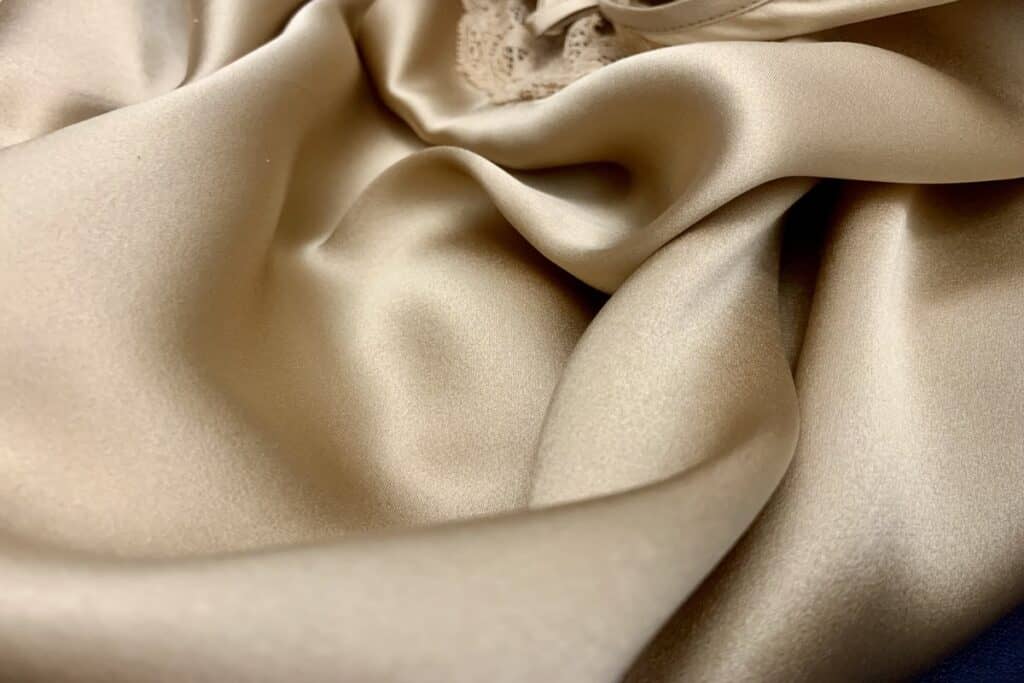
The Best Detergents and Fabric Conditioners for Silk
Harsh laundry detergents strip natural oils, while fabric softeners and dryer sheets leave residue. When shopping for silk care products, look for:
- Silk-specific, low-sudsing detergents – Heritage Park Laundry Detergent (link to Amazon) is my go-to for silk items. It’s incredibly gentle on the delicate fabric, ensuring that my silks last longer and stay gorgeous.
- Woolite Dark (link to Amazon) – Great for black silk items prone to fading
- White vinegar – Natural brightener and deodorizer
- Hair conditioner – For leave-in silk fiber conditioning
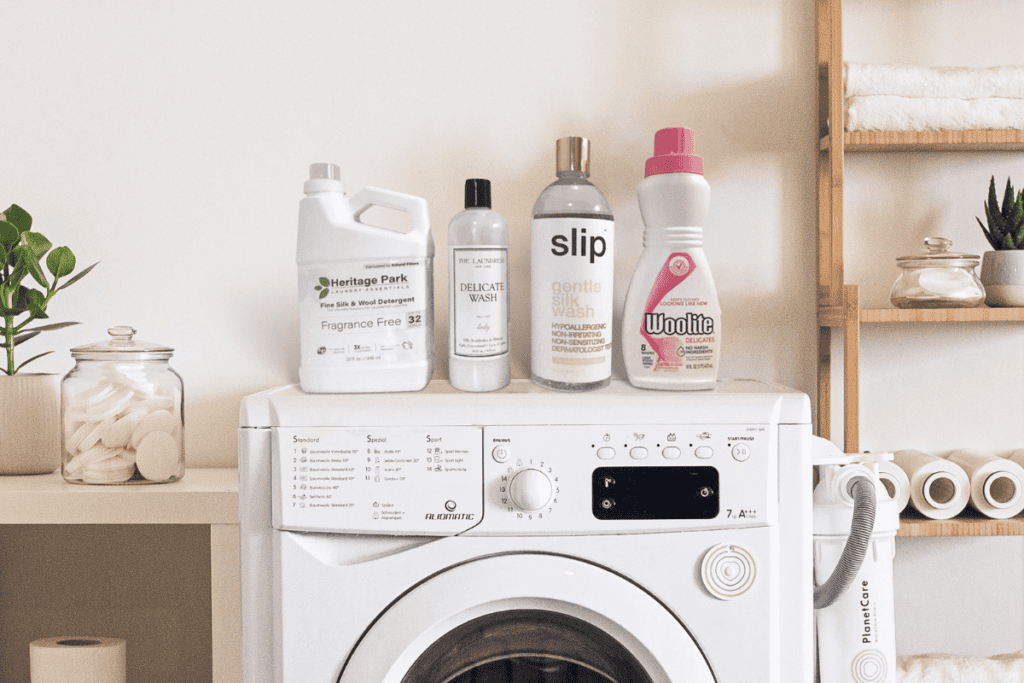
Can I Dry Silk in My Attic or Basement?
I do not recommend air drying silk in attics or basements as they tend to be damp, dusty spaces without good airflow.
The humidity and particles in the air can leave moisture or dirt stains on the fabric. It’s best to dry silk in a clean, dry room-temperature area.
How Can I Speed Up the Silk Drying Process?
Using an electric fan set to low or medium can help circulate air and evaporate moisture more quickly than passive air drying alone.
Just make sure to keep the fan several feet away so it doesn’t blow directly on the silk, which could potentially damage delicate fibers. The key is facilitating airflow without excessive friction.
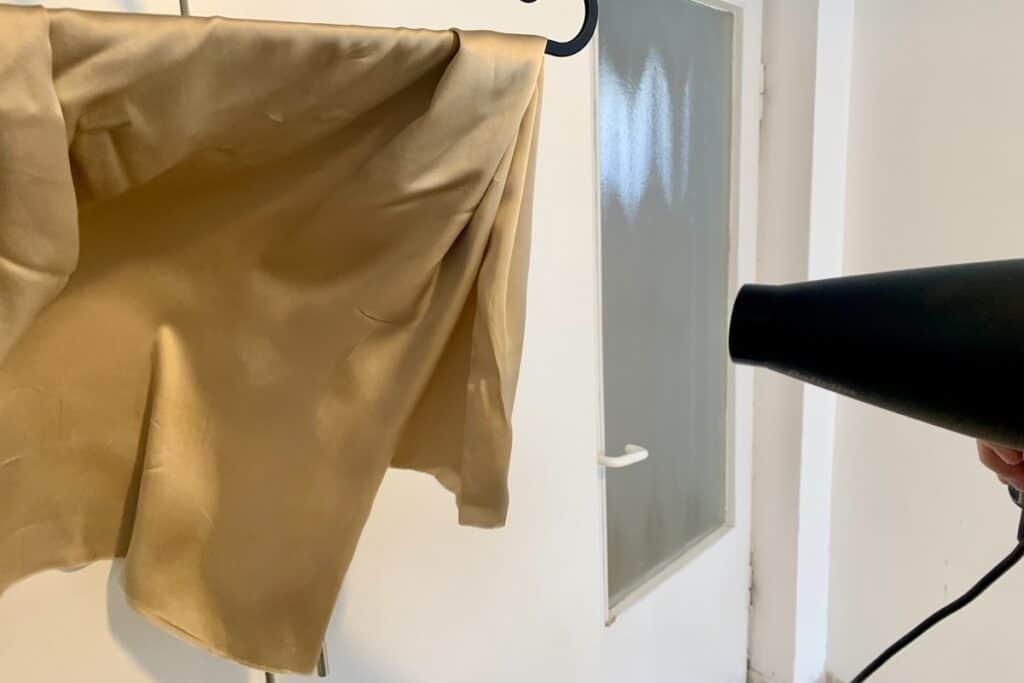
Is It Safe to Iron Silk After Air Drying?
As long as you use a low heat setting and gently steam silk garments, ironing is safe after air drying.
Choose a delicate fabric setting, use an up-and-down motion to avoid stretching the fibers, and always place a cloth between the iron and silk.
This helps restore silk’s signature sheen and smoothness. Just take care not to leave the heated iron in one spot for too long.
The keys to ironing are using a low temperature, keeping the iron moving, and avoiding direct contact between the hot metal and silk fabric.
With a careful approach, ironing can safely refine the drape and appearance of air-dried silk pieces.
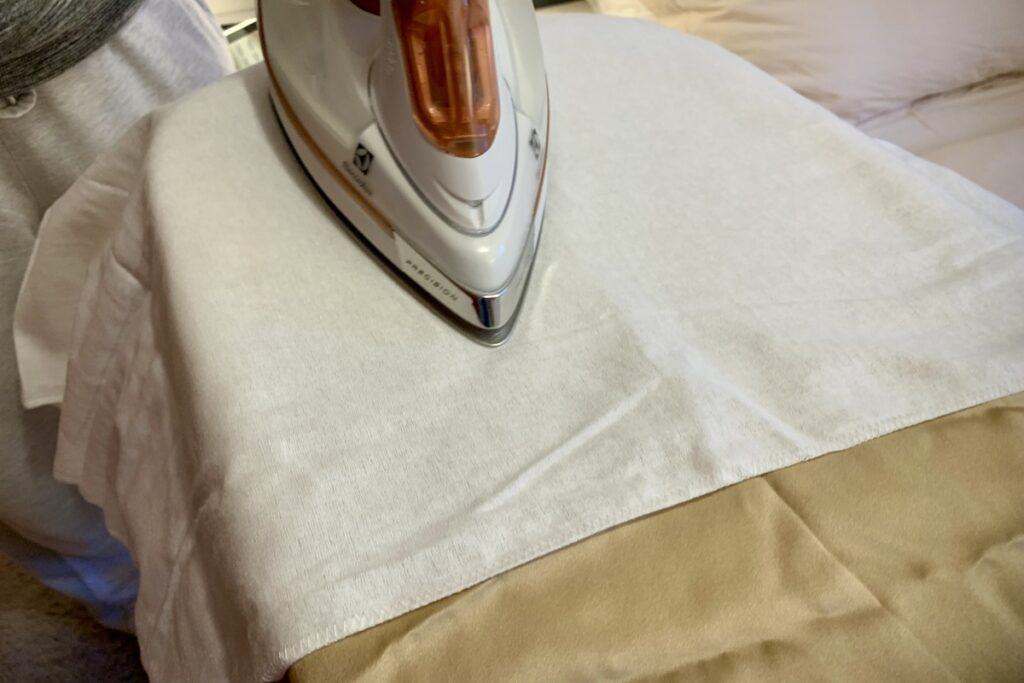
How Can I Dry a Silk Dress or Blouse on a Hanger Properly?
If air drying silk on a hanger, use a wide, padded hanger to evenly distribute weight and prevent distortion of the shoulder area. Keep the garment’s original shape with shoulder padding.
Make sure hangers have smooth edges that won’t snag. Arrange hanging items spaced apart for airflow and allow the silk to dry completely before wearing or storing.
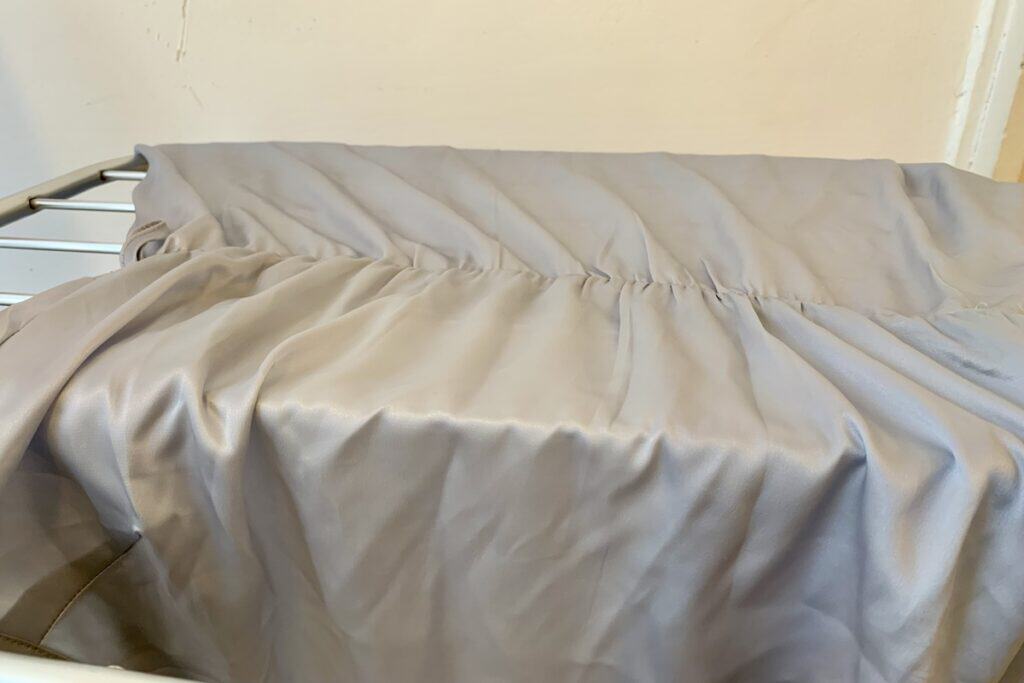
Conclusions
I used to be intimidated about properly caring for silk clothing in my wardrobe.
But since learning the dos and don’ts of washing, drying, and storing silk garments correctly, I feel much more confident about how to keep them looking fabulous.
Remember – skip the machine drying, avoid direct sunlight, lay fully flat to dry silk items, lift stains gently with natural solutions, and use specialty detergents.
I hope these best practices give you the knowledge needed to keep your favorite silk pieces in sensational condition while avoiding damage from improper drying or care.
With the right maintenance approach, your silk tops, dresses, and accessories will stay vibrant, soft, and luxurious for many years of enjoyment.
